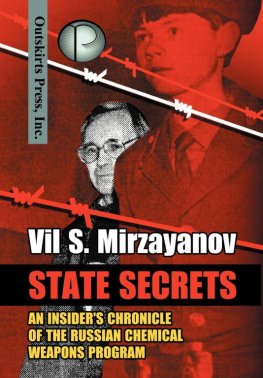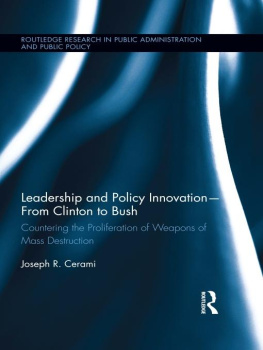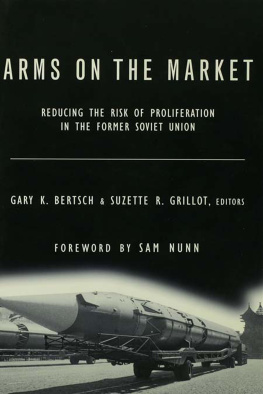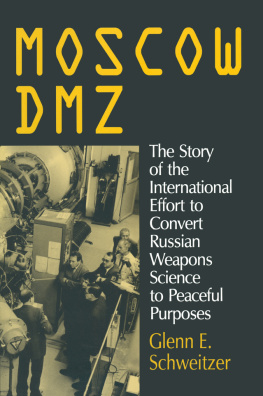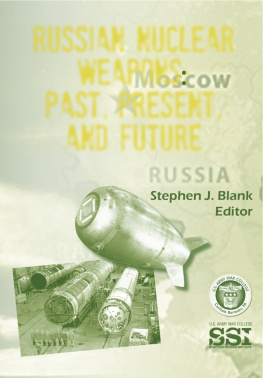The GOSNIIOKhT Party Committee and Deputy Director Konstantin Guskov
Let us return to the question of the selection of the Party Committee secretary, since this will help us to understand more about our work.
Yuri Mochalov, who worked on the start-up section crew in the Kazan Plant for Organic Synthesis that produced ethylene oxide, had learned more than everyone else about the Party Committee secretarys work at GOSNIIOKhT. His only positive quality was his nave and total belief in Communism, which he demonstrated with great expression once during a meeting of his work units party group. During his speech, with a passionate oath of loyalty to the ideals of Lenin, he gestured dramatically, even ripping off part of his shirt.
Yuri spoke very poorly while sharing his thoughts, and for this reason he decided to disguise the defects in his thinking with the drama. It was of no use. After this they noticed him and promoted him to the position of secretary of the Party Committee. All the same, Yuri never, until the end of his days as secretary, learned to articulate. However, that didnt stand in his way when he wanted to lecture some poor professor from the party meeting rostrum. This means, Nicolai Aleksandrovich, you understand, the party cant stand by indifferently.. It means for you, you understand, bedroom business. We, you understand, had to shake out your sheets it means, you understand
Behind this nonsense tirade was the true menacing control of the Communist Party over the lives of the people. The ubiquitous presence and the interference of the Communist Party into the private lives of researchers only intensified the bureaucratic tangles at GOSNIIOKhT. The institutes Party Committee actively engaged in the moral upbringing of its employees, which amounted to nothing more than the petty settling of personal scores between individuals. Veterans of GOSNIIOKhT can recall how the Party Committee wrapped its tentacles around Boris Medvedev, a young physical chemist who fell in love with his research assistant. In meeting after meeting, the Party Committee openly subjected him to insults and mockery. When Medvedev couldnt stand this persecution anymore, he deliberately exposed himself to Substance 33, the VX analog. He simply entered his workroom, took the ampoule of Substance 33, poured it into a glass with water and drank the mixture. Medvedevs death was so quick and violent that laboratory colleagues and doctors from GOSNIIOKhTs Medical Department could do little but helplessly watch him suffer and die. No wonder so many scientists at GOSNIIOKhT, stifled by party control and interference into their lives and bureaucratic lies, simply turned to the bottle for escape.
Nevertheless, Mochalov proved to be ambitious and even finished a party school affiliated with the Moscow City Committee of the CPSU. He was even selected to become a member of this committee, but such high ambitions brought him down. One night he drank himself half to death and was lying in the street. He was picked up by the police and sent to the sobriety station. Mochalov decided to scare the official with his membership certificate to such a high organization. Apparently, they were accustomed to clients who were much higher VIPs than Mochalov, so the supervisor of the drunk-tank reported where he had to. Shortly after that, our secretary exchanged his party career for a trade union, where he was not able to run away from his swift defeat.
Another Party Committee Secretary, the one who replaced Mochalov, was Nikolai Golosov. He was an incredible colorless dim-wit, but he was able to make his way through the apparatus of the Chemistry Department of the Central Committee of the CPSU. Once more, this showed everyone what kind of person was needed in those days, to work in the higher organs of power in the country.
I remember during the height of the battle by the organization Democratic Russia, for further democratization of the country through the destruction of the CPSUs monopoly of power, that the party bosses came to the institute and Golosov was among them. One of the local members of Democratic Russia had said that there were no practical ways for working out alternative decisions and legislation in a one-party system in the country. In response to this comment, Golosov proclaimed First of all, we prepare several variants for each decision in our department. As they say, it was useless to comment on this.
The advancement of Deputy Director Konstantin Guskov up the career ladder at Post Office Box 702, serves as a good example of how things worked. All departments and laboratories, which were engaged in researching the technological processes that were to be introduced into existing and new start-up factories, were placed under his command. He was also First Deputy Director of GOSNIIOKhT for a long time, and had right to sign the financial documents.
Guskov completed his masters degree at the Mendeleev Chemical Technical Institute of Moscow, while he was studying the technology of chemical agents. After that he came to work at Post Office Box 702, as the head of the experimental plant. He did everything that was required of him and became a member of the Party Committee. Then he became the paid secretary, automatically guaranteeing him the ability to get an even higher appointment, with the agreement of the Central Committee of the CPSU.
Shortly thereafter, Guskov became a deputy director. In all fairness, I must say that he was a rather talented engineer, able to quickly grasp the essence of a problem. He was not afraid of making tough decisions, which required considerable responsibility, because of their potential consequences. I was aware of this soon after the beginning of my work at the Post Office Box.
In the beginning of the 1930s, our enterprise had researched methods of developing ethylene oxide from ethylene, and from that step it was easy to get the military blistering agent known as mustard gas. It is well known that ethylene oxide also serves as a wonderful initial reagent for the synthesis of many chemical products (polymers, anti-freeze and others), and currently more than several hundred thousand tons are produced annually by the industrialized countries of the world. You can also produce ethylene sulfide from ethylene oxide. This can be transformed into diethylaminoethyl-mercaptan, which is a precursor for the chemical agent Substance 33. A special department existed in the enterprise, known as Technology of Organic Synthesis (TOS), and its goal was to research the technology of the compounds that carry the title dual use agents.
Many attempts were made at Post Office Box 702, to master the production of ethylene oxide from ethylene, but none were successful, including the unfortunate start-up of the factory section in the town of Salavat, Bashkortstan.
In 1967, when the Kazan Plant for Organic Synthesis had yet to master the latest improved technology, the annual worldwide production of ethylene oxide exceeded 60,000 tons.
As the creator of the chromatographic methods for analyzing reaction mixtures, I also participated in the long drawn out set-up of the plant in Kazan. The Government Commission on the start-up was under the leadership of Oscar Diment, who was the head of the TOS Department. He had been transferred there from the Ministry of Chemical Industry, where he had worked for a long time as Chief Engineer of the Main Administration Soyuzorgsynthesis, which our Post Office Box was directly subordinate to. The Commission was composed of such ordinary members, that it appeared to me that Guskov suffered greatly since he did not serve as its chairman.
At work they explained that the alleged productivity of ethylene oxide fluctuated greatly, showing a tendency to constantly degrade. Guskov decided to investigate the reason for this, by analyzing the registered indices of the constants involved in the process (temperature of the reactor, maintenance of humidity in the reactant gas and others). He chose me to work as his assistant on this matter, and we worked for 15 out of 24 hours, unwinding the graphing tape that was several hundred meters long and plotted productivity graphs, using various parameters. Finally we found the reason for the declining efficiency of the working reactor. (Incidentally it was loaded with more than 10 tons of pure silver, since at that time in the U.S.S.R. it was not possible to manufacture a catalyst which covered the surface of an inert solid. We had 3 reactors filled with this quantity of silver.)
Next page

